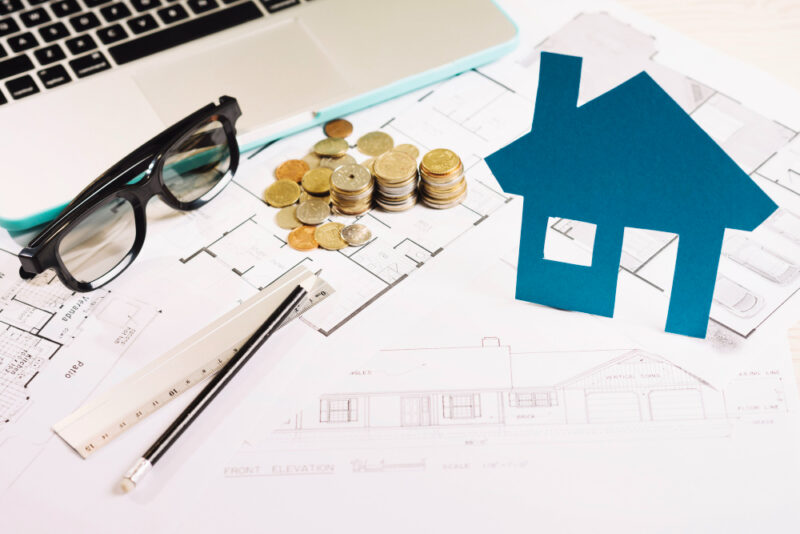Financing home improvements can be a daunting task, but with the right approach, it can also be an opportunity to enhance the value and comfort of your home. Whether you’re looking to renovate your kitchen, add an extra room, or upgrade your energy efficiency, finding the best ways to finance these improvements is crucial.
One option is to explore home equity loans or lines of credit. These allow you to borrow against the equity in your home and typically offer lower interest rates compared to other forms of financing. This can be a great choice if you have significant equity built up in your property.
Another popular option is personal loans. These are unsecured loans that can be used for various purposes, including home improvements. Personal loans often have fixed interest rates and flexible repayment terms, making them a convenient choice for smaller renovation projects.
If you’re considering energy-efficient upgrades such as solar panels or insulation, it’s worth exploring government incentives and grants. Many countries offer financial assistance programs aimed at promoting sustainable living and reducing carbon emissions. Taking advantage of these programs can significantly offset the cost of your home improvements.
Remortgaging
Remortgaging is the process of switching your existing mortgage to a new lender or renegotiating the terms with your current lender. It offers homeowners the opportunity to take advantage of lower interest rates, reduce monthly payments, or access additional funds for various purposes.
One of the most compelling reasons to consider remortgaging is the potential for significant savings. With interest rates fluctuating constantly, it’s essential to keep an eye on market trends. By securing a lower rate through remortgaging, you can potentially save thousands of dollars over the life of your loan. Imagine what you could do with that extra money – invest in home improvements, pay off debts, or even plan for that dream vacation you’ve always wanted.
But it’s not just about saving money; remortgaging also provides flexibility and freedom. You might find yourself in a different financial situation now compared to when you initially took out your mortgage. Perhaps your income has increased, or maybe you have some outstanding debts that need consolidating. Remortgaging allows you to customize your loan terms and adjust them to better suit your current circumstances.
Moreover, remortgaging offers an opportunity to tap into the equity in your property. If you’ve built up equity over time, either through paying down your mortgage or experiencing appreciation in property value, remortgaging can allow you access to this capital. Whether it’s for home renovations or funding other major life expenses like education or starting a business – remortgaging can provide a practical solution without having to sell and move out.
While there may be costs associated with remortgaging – such as valuation fees, legal fees, and early repayment charges – these should be weighed against the potential benefits and long-term savings.
Second charge mortgages
In today’s fast-paced world, it’s no secret that financial needs can arise unexpectedly. Whether you’re looking to renovate your home, consolidate high-interest debts, or fund a new investment opportunity, finding the right solution to meet your financial goals can be a daunting task. This is where second charge mortgages come into play.
Second charge mortgages provide homeowners with a valuable alternative to traditional loan options. Unlike remortgaging or taking out a personal loan, a second charge mortgage allows you to borrow against the equity in your property while keeping your existing mortgage intact. This means that you can access additional funds without having to go through the hassle of refinancing your entire mortgage.
One of the most compelling advantages of second charge mortgages is their flexibility. Whether you have an adverse credit history or are self-employed with irregular income, these mortgages offer more lenient eligibility criteria compared to other borrowing options. Additionally, they provide borrowers with access to larger loan amounts and longer repayment terms, ensuring that you can tailor the loan to suit your specific needs and budget.
Furthermore, second charge mortgages often come with competitive interest rates, making them an attractive option for homeowners looking for affordable financing solutions. By leveraging the equity in your property as collateral, lenders are able to offer lower rates compared to unsecured loans or credit cards.
Another key benefit of second charge mortgages is their speed and convenience. Unlike traditional lending methods that may involve lengthy application processes and extensive documentation requirements, securing a second charge mortgage can be a much smoother and faster experience. With advancements in technology and streamlined underwriting processes, many lenders are now able to provide quick decisions on loan applications.
Equity Release (for over 55s)
Equity release has become an increasingly popular option for individuals over the age of 55 who are looking to unlock the value tied up in their homes. It offers a flexible and accessible way to access funds without having to sell or downsize. With the rising cost of living and the desire for financial freedom, equity release provides a solution that can help individuals meet their financial goals while still enjoying the comfort and security of their own home.
Using your savings
It’s time to turn your home improvement aspirations into a reality. But before you start stressing about where to find the funds, consider this: your savings can be the perfect solution. By using your hard-earned savings to fund your home improvements, you can take control of your project and enjoy the benefits for years to come. Not only will this save you from borrowing money and paying interest, but it will also give you the freedom and flexibility to make the changes that truly reflect your personal style and preferences. Let’s explore how harnessing your savings can be a smart and rewarding choice when it comes to transforming your living space.
Personal loan
With a personal loan, you have the flexibility to borrow the amount you need and pay it back over time with fixed monthly payments. This means you won’t have to worry about sudden increases in interest rates or fluctuating payments. Plus, unlike other forms of financing such as credit cards or home equity loans, personal loans often offer competitive interest rates that can save you money in the long run.
But what makes personal loans truly stand out is their simplicity and accessibility. The application process is quick and straightforward, with many lenders offering online applications that can be completed from the comfort of your own home. You don’t have to jump through hoops or provide extensive documentation like with other types of loans.
Furthermore, personal loans are unsecured, meaning you don’t need to put up any collateral such as your home or car. This gives you peace of mind knowing that your valuable assets are not at risk if unforeseen circumstances arise.
Another advantage of using a personal loan for home improvements is that they offer flexibility in terms of repayment options. Lenders understand that everyone’s financial situation is unique, so they often provide various repayment terms ranging from one to seven years. This allows you to choose a term that fits comfortably within your budget while still making progress towards achieving your dream home.
Additionally, by financing your home improvements with a personal loan instead of dipping into savings or using credit cards, you preserve your financial cushion for emergencies or future investments. This can provide invaluable peace of mind knowing that unexpected expenses won’t derail your plans.
So why wait any longer? Take advantage of the convenience and benefits offered by personal loans to finance those much-needed home improvements today. With a personal loan, you can transform your house into the home you’ve always dreamed of, all while maintaining your financial stability and protecting your valuable assets.










